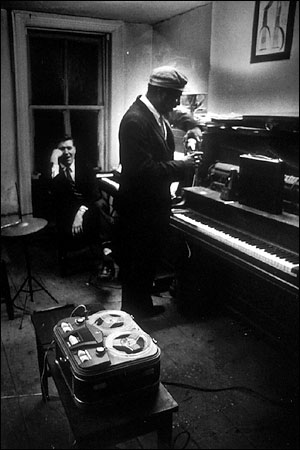
Thelonious Monk photo by W. Eugene Smith for promotional use
Composer Steve Reich said, “Without John Coltrane, there
would be no minimalism.” The topic was Hall Overton, the man who arranged Monk’s music, treating jazz as contemporary “classical” composition. The occasion was a panel discussion sprung from an exhibit at the NY Public Library of the Performing Arts about the Jazz Loft hosted by photographer W. Eugene Smith from 1955-1964 (this is Smith’s shot of Overton with Monk in the Loft).
Reich, one of the four American composers (with Terry Riley, La Monte Young and Philip Glass) commonly credited with minimalism’s radical break from 12-tone serialism, avowed that saxophonist Coltrane was the pioneer in elaborating on the potential of single chord for half an hour, employing rhythmic complexity, timbral variety and melodic invention rather than complex, far-reaching harmonic systems to sustain listener interest. His explanation was by way of saying that under the tutelage of Hall Overton, a minor composer but major mid-20th century New York City composition teacher, the gulf between jazz and contemporary composition was not ideological but a practical matter to be bridged.
